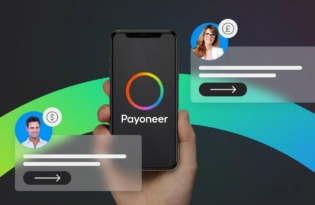Financing solutions for Amazon sellers
Financing solutions are crucial when it comes to scaling your Amazon business. While traditional bank loans may not always be accessible, alternative pathways to obtain working capital exist. Read on to learn about financing options for your Amazon business.

Whether you are just starting out and need some cash flow to get going or you’re ready for a serious expansion, securing the right kind of financing is a make-it or break-it decision for many Amazon sellers. Many business owners reach a certain level and then find they need financing to level up with more inventory, more choices, or a better merchant site. So, what do you need to know about finding the infusion of working capital you need as an Amazon seller? There is a vast array of choices and not all of them are right for every business, so it’s critical to be discerning about the kind of working capital offer you decide to take and weigh every option carefully before you take the plunge.
It can be difficult to secure a traditional financing options like a loan as an Amazon seller. Brick-and-mortar banks are wary of small online businesses and are unlikely to extend financing if you are starting out, can’t show significant sales and revenue, and don’t have any collateral. Furthermore, traditional financing options are generally fairly large – far larger than the average Amazon lender requires. However, there are plenty of alternative pathways to obtaining funding for your Amazon business.
Before you borrow, be prepared
It can really pay to be prepared before you start collecting information on loan and funding options for your eCommerce store. The more you understand about your own business needs and potential challenges, the better off you will be when it comes time to decide on a financing solution.
Before you ask for a loan offer:
- Know your credit score. Your risk level will play a big part in the loans you will be able to access as well as their conditions and terms.
- Get a handle on your business’ finances and cash flow before you borrow money. Timing is everything.
- Ask yourself the right questions: What are my goals (marketing campaign, stocking up for an upswing in sales, expanding product range)? How quickly will I need the money? How long will it take me to pay it back?
Timing is everything when it comes to securing financing for an Amazon seller. If you take out the borrowed capital too early, your revenue may not be enough to pay back, and if you are overly conservative, it may mean that you miss out on the opportunity to successfully scale your business. It is also imperative to find the right kind of funding structure for your business financing needs. There are different options, so be prepared before you decide.
Most lenders will need the same basic information in order to consider you for a business loan or other funding options your online store. Getting this in order will save valuable time and help streamline the lending application process. These are some of the documents you may need to present in order to secure working capital as an Amazon merchant:
- Business and personal tax returns
- Business and personal bank statements
- Profit and loss statements
- Business plan
- Financial records
- Credit history
Once you’re prepared, you can determine what seller funding options works best for your store and your needs, goals, and potential.
Credit card advance for merchants
A Merchant Cash Advance lets you borrow against your credit card sale revenue and pay it back as a percentage of your sales on a predetermined daily or weekly basis, plus a fixed fee and interest. Since Amazon sellers receive a majority of their payments by credit card purchases, a Merchant Cash Advance may be a good fit.
One benefit of a Merchant Cash Advance is the quick application and approval process. If you need cash quickly, a Merchant Cash Advance will offer between $2,500 and $250,000 within a short period of time – sometimes within hours – when you are approved. Another feature of Merchant Cash Advances is that sellers can apply online and with fewer documentation requirements than other non-traditional lenders. You may not need a credit check or collateral, making this an attractive option for Amazon sellers with lower credit scores, prior bankruptcies, or those just starting out.
While Merchant Cash Advances may seem like a good solution for a cash-strapped Amazon seller, the repayment schedule can be difficult to meet. Interest rates can be higher than other non-traditional lenders and fees vary, so be prepared for the payments before you apply for a Merchant Cash Advance.
Factoring with amazon store accounts receivables
Factoring is a legal process by which a financing company buys your Amazon business’s accounts receivable, with the factoring company retaining a percentage of the accounts as a reserve and as well as an additional fee. When the receivables are settled, you will get the reserve back. Interest may also be applied to cash advances at a fairly high rate. Since the repayment depends on settling outstanding payments, your rates will not be in your control. Slower accounts receivable settlement means a higher cost to the borrower, so it’s important to understand the total amount you will need to pay back.
Since factoring loans are quick and easy to get, and have no requirement for collateral to qualify, they may be attractive to Amazon sellers who need quick cash and can become an integral part of cash flow management for relatively new & mature eCommerce stores.
Payoneer capital advance
Payoneer Capital Advance provides working capital to Amazon stores & businesses, offering an ideal cash flow management solution for sellers with one or multiple stores that are underserved by traditional financing solutions. eCommerce sellers on Amazon can secure a capital advance on upcoming marketplace earnings and settle the amount gradually as the money is paid.
When you accept a Capital Advance offer, Payoneer purchases part of your future account receivables equivalent to the Capital Advance amount plus a fixed fee (the settlement amount). Payoneer gradually collects a portion of your payments from your account until fully settled. Your future marketplace earnings can secure you up to $750,000 or up to 140% of the monthly volume of your Amazon store.
Payoneer Capital Advance is a quick and easy process, with online application and approval. It does not require any collateral or credit checks. One-click money transfer into your Payoneer account means that you can have instant access to working capital. Purchase stock, invest in marketing, hire staff, or do anything you need to scale your business.
An added benefit for Amazon sellers who finance their business with Payoneer Capital Advance is transparency – one attractive, fixed fee with no hidden surprises.
Amazon lending
Amazon offers funding to sellers in the marketplace on condition that the funds are used for Amazon inventory exclusively. Amazon Lending uses an AI algorithm to analyze your Amazon Store performance to qualify for sellers funding solution instead of your credit score. There is sometimes no requirement for collateral. Financing amounts range from $1,000 to $750,000. Repayment terms go up to 12 months, depending on the health of your seller account.
To qualify for an Amazon lending solution, you will have to have at least six months of merchant sales history with minimum average sales of $5,000 per month or $30,000 during the six month period. Your business must also be in good standing with Amazon in order to receive a direct seller loan. Applying as an Amazon seller for funding requires you to submit your lending request. Once you have repaid 50% or more, you can request additional working capital from Amazon. Amazons funding solution lets you start paying back the borrowed amount 90-days after receiving the funds, which helps you secure sufficient revenue to meet the repayment terms before interest starts to accrue. Rates vary from 14.99-24% APR, with no hidden fees or penalties for paying back early.
The main drawback of accessing working capital from Amazon is that you must earmark the funds for use on Amazon. If you are looking to scale and expand in different ways, then Amazon Lending is not the solution. Qualifying for a loan as an Amazon seller is also difficult. Merchants who are new to the marketplace and those without strong prior performance will not qualify for this lending option based on Amazon’s algorithm and may have to look elsewhere.
Business term loan for amazon sellers
A business term loan is a lump sum of capital that is repaid with regular payments at a fixed interest rate. This traditional financing option can be found at banks and credit unions, and more recently is offered by online direct lenders. Loan amounts vary widely depending on your Amazon business’s revenue and your credit history. With amounts ranging from $5,000 to $5 million and repayment schedules ranging from five to twenty years, business term loans can be tailored to most needs – but only if you qualify. Larger Amazon merchants with demonstrated success will likely have a better chance.
Line of credit for ecommerce merchants
Not unlike a credit card, a business line of credit gives you the ability to use money for purchases or cash withdrawals up to a set amount. Loan amounts from a line of credit vary widely, like business term loans, and will largely depend on what your Amazon business qualifies for.
Loan amounts range from $5,000 to $5 million, with many lenders requiring an Amazon business to have been operating for at least one year with a minimum yearly revenue of $50,000. Lenders generally charge monthly fees ranging from 1.5 to 10%, with varying APR depending on the lender and your business’s qualification. Terms also vary, so it’s important to do some research if this is the financing solution you choose for your Amazon business.
The advantages of a line of credit are flexibility and securing working capital quickly. Purchase inventory, run a new marketing campaign or save the money for a rainy day – with this option you will only repay what you use. Plus, with an online application, you can get approved in just minutes. However, being eligible for a line of credit can be more difficult than other financing options, so it may not be an option for some Amazon sellers.
Credit card financing for purchases & procurement
With often sky-high high-interest rates, using your business credit card as a financing solution may cost you big in the long run. While it may be tempting to cover some short-term expenses, make quick seasonal purchases and unforeseen product procurement or get your Amazon business stocked quickly. If you decide to finance with a credit card be sure to repay the full amount as soon as possible or negotiate the lowest interest rates available.
Peer-to-peer financing (p2p) for online stores
Peer-to-peer (P2P) financing describes a business loan funded by investors instead of directly by a lender. The borrower essentially pitches their business via a P2P platform online and then waits for investor lending offers to come in. A P2P provider mediates between investors and borrowers, facilitating the application, approval, and repayment process for your Amazon business loan. The funding request may be met with numerous offers, with investors bidding on your business.
Repayment of a P2P loan is done in monthly installments, with interest and fees added. This can mean high payments, so it is important to determine that your revenue will be sufficient to meet the schedule. To apply for a P2P loan you will be required to present documentation, including credit score, financial records, and a business plan. Investors in your Amazon business will be more interested in offering financing depending on this information, getting you more offers with potentially better terms.
However, the auction process, approval time, and financing issuance can take a while depending on the investor, so if you need faster access to working capital then P2P may not be right for you.
Conclusion
Amazon sellers are dominating the growing eCommerce market, but scaling can be a challenge when seeking financing. Traditional bank lending is often not accessible and many non-traditional loan options have high fees and interest rates that can set you back instead of propelling you forward. Before deciding on the loan you need for your Amazon business, decide what your objectives are. What do you need working capital for? How much you will need? How long it will take you to repay it? Based on a solid understanding of your business, you can leverage strategic financing to scale your Amazon seller footprint. So decide on a lender that is accessible, fair, and can serve your individual business needs.
Related resources
Latest articles
-
Made in India for the World: The State of Indian Cross-Border eCommerce
The Indian eCommerce market has grown significantly in the last few years. As a result, many cross-border businesses have undergone a fast-paced digital transformation and contributed to surpassing the government-set $400 billion target of trade within a single year.
-
Defying the odds: How Ukrainian businesses thrive during war
One year post-war, Ukraine’s businesses adapt and thrive amidst adversity. Entrepreneurs showcase resilience, reflecting national tenacity. Many diversify, venturing into e-commerce and digital realms. Despite hurdles, 44% of SMBs aim for growth, with 36% hiring. Their grit underscores Ukraine’s enduring spirit amid challenges.
-
An 8-point Checklist for Finding the Best Payment Provider
There’s huge potential to expand into ASEAN markets. But only for online sellers that accept local payment methods. Finding a trusted payment solution can be a worry and a challenge. Use this checklist to vet potential payment partners. With the right payment support, the sky’s the limit!
-
How to bill your international clients
Want to learn how to bill international clients when you’re based in the Philippines? In this article we spoke to three leading business owners who shared their tips to working successful international work. Learn how they collect payments and more below.
-
How to nail your direct-to-consumer payment strategy
Asia-Pacific offers massive potential for DTC ecommerce. But cross-border payments can be a headache. We share an actionable strategy for DTC payments that’ll remove DTC payment hazards and expand your business with ease. What are you waiting for?
-
How to pay international vendors in order to promote profits and reduce risk
In this article, we’ll share our expert tips and best practices for paying international vendors, so you can focus on growing your business. From choosing the right payment method to navigating currency exchange, we’ve got you covered.














